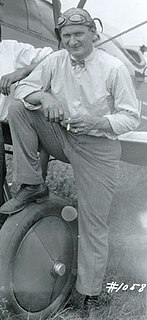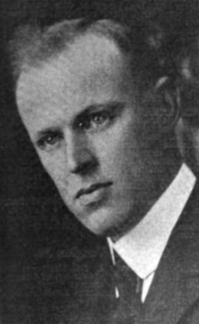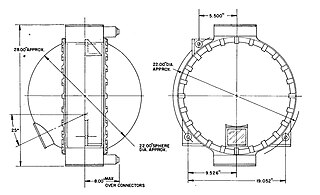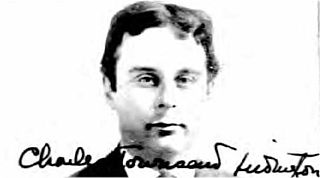| | |
| Industry | Aeronautics |
|---|---|
| Founded | 1919 in Brooklyn, New York |
| Founders | |
| Headquarters | , United States |
| Parent | Bendix Corporation (1922–1983) |
The Pioneer Instrument Company was an American aircraft component manufacturer.
| | |
| Industry | Aeronautics |
|---|---|
| Founded | 1919 in Brooklyn, New York |
| Founders | |
| Headquarters | , United States |
| Parent | Bendix Corporation (1922–1983) |
The Pioneer Instrument Company was an American aircraft component manufacturer.
The Pioneer Instrument Company was started by Morris Maxey Titterington and Brice Herbert Goldsborough in Brooklyn, New York in 1919. Charles Herbert Colvin was the president. They specialized in aeronautical instruments including a bubble sextant and the Earth Inductor Compass. The company later acquired control of Brandis & Sons, Inc., in 1922, and Pioneer was later acquired by the Bendix Aviation Corporation in 1928. [2] [ failed verification ] As the United States was entering World War II, the company became the Pioneer Instrument Division of Bendix Aviation, and moved to New Jersey. By 1943 it had merged with the Eclipse Machine Company to become the Eclipse-Pioneer Division of Bendix Aviation.
The Pioneer division did not survive the end of the Bendix Corporation in 1983.


Pan American World Airways, originally founded as Pan American Airways and commonly known as Pan Am, was the principal and largest international air carrier and unofficial overseas flag carrier of the United States for much of the 20th century. It was the first airline to fly worldwide and pioneered numerous innovations of the modern airline industry, such as jet aircraft, jumbo jets, and computerized reservation systems. Until its dissolution in 1991, Pan Am "epitomized the luxury and glamour of intercontinental travel", and it remains a cultural icon of the 20th century, identified by its blue globe logo, the use of the word "Clipper" in its aircraft names and call signs, and the white uniform caps of its pilots.

James Harold Doolittle was an American military general and aviation pioneer who received the Medal of Honor for his daring raids on Japan during World War II. He also made early coast-to-coast flights, record-breaking speed flights, won many flying races, and helped develop and flight-test instrument flying.
The Curtiss-Wright Corporation is an American, global diversified product manufacturer and service provider, incorporated in Delaware with headquarters in Parsippany-Troy Hills, New Jersey, which supplies the commercial, industrial, defense, and energy markets. Created in 1929 from the consolidation of Curtiss, Wright, and various supplier companies, by the end of World War II it was the largest aircraft manufacturer in the United States, supplying whole aircraft in large numbers to the U.S. Armed Forces. It has since evolved away from the final assembly of finished aircraft, becoming a component manufacturer specializing in actuators, aircraft controls, valves, and surface-treatment services. It also is a supplier to commercial nuclear power, nuclear navy systems, industrial vehicles and to the oil and gas industries.

Iris Louise McPhetridge Thaden was an American aviation pioneer, holder of numerous aviation records, and the first woman to win the Bendix trophy, alongside Blanche Noyes. She was inducted into the Arkansas Aviation Historical Society's Hall of Fame in 1980.

Brice Herbert Goldsborough was an American aviation instrument designer at Sperry Gyroscope and later founded the Pioneer Instrument Company. He flew aboard the Spirit of St. Louis with Charles Lindbergh in two test flights. He died in an attempt to cross the Atlantic Ocean with Frances Wilson Grayson aboard The Dawn.
The Bendix Corporation was an American manufacturing and engineering company which, during various times in its 60-year existence (1924–1983), made automotive brake shoes and systems, vacuum tubes, aircraft brakes, aeronautical hydraulics and electric power systems, avionics, aircraft and automobile fuel control systems, radios, televisions and computers. It was also well known for the name Bendix, as used on home clothes washing machines, but never actually made these appliances.
Vincent Hugo Bendix was an American inventor and industrialist. Vincent Bendix was a pioneer and leader in both the automotive and aviation industries during the 1920s and 1930s.
The Bendix Aviation Corporation was a manufacturer of aircraft parts based from 1929 to 1960 in Los Angeles, California.

Avco Corporation is a subsidiary of Textron which operates Textron Systems Corporation and Lycoming.

Morris Maxey Titterington was a pioneering aviator, and engineer.
Paul Kollsman was a German-American inventor. He invented the first sensitive barometer, a key enabler of instrument flight in airplanes.

The Aeronautical Division, Signal Corps (1907–1914) was the first heavier-than-air military aviation organization in history and the progenitor of the United States Air Force. A component of the U.S. Army Signal Corps, the Aeronautical Division procured the first powered military aircraft in 1909, created schools to train its aviators, and initiated a rating system for pilot qualifications. It organized and deployed the first permanent American aviation unit, the 1st Aero Squadron, in 1913. The Aeronautical Division trained 51 officers and 2 enlisted men as pilots, and incurred 13 fatalities in air crashes. During this period, the Aeronautical Division had 29 factory-built aircraft in its inventory, built a 30th from spare parts, and leased a civilian airplane for a short period in 1911.
Charles Herbert Colvin was an aeronautical engineer who was the co-founder of the Pioneer Instrument Company in Brooklyn, with Brice Herbert Goldsborough and Morris M. Titterington.

The ST-124-M3 inertial platform was a device for measuring acceleration and attitude of the Saturn V launch vehicle. It was carried by the Saturn V Instrument Unit, a 3-foot-high (0.91 m), 22-foot-diameter (6.7 m) section of the Saturn V that fit between the third stage (S-IVB) and the Apollo spacecraft. Its nomenclature means "stable table" (ST) for use in the moon mission (M), and it has 3 gimbals.
Honeywell Aerospace is a manufacturer of aircraft engines and avionics, as well as a producer of auxiliary power units (APUs) and other aviation products. Headquartered in Phoenix, Arizona, it is a division of the Honeywell International conglomerate. It generates approximately $10 billion in annual revenue from a 50/50 mix of commercial and defense contracts.

Eugene Luther "Gene" Vidal was an American commercial aviation pioneer, New Deal official, inventor and athlete. He was the father of author Gore Vidal. For eight years, from 1929 to 1937, he worked closely with Amelia Earhart in a number of aviation-related enterprises, and was President Franklin Roosevelt's top civil aviation director from 1933 to 1937.
Harry Augustine Bruno was a promoter of aviation and boating, and a pioneer public relations professional.

Charles Townsend Ludington, , was a businessman of Philadelphia. He was an aviation pioneer who helped establish an every-hour-on-the-hour air service between New York and Washington. His airline ultimately became Eastern Airlines. He designed airports, airplanes, and gliders. One of his designs became a Navy training airplane. Another of his designs was a crash protection device installed on Navy airplanes that saved pilot lives. Ludington also make a line of boats that were designed by a professional outboard boat racer.

Aircraft Radio Corporation (ARC) – not to be confused with Aeronautical Radio, Inc. (ARINC) – was a principal pioneer and major manufacturer of avionics for military and commercial aircraft, and later general aviation (light) aircraft, from the 1920s to the 1950s—subsequently acquired and rebranded by a succession of other companies, each of whom changed the official name, of the enterprise, while initially continuing ARC's primary function, staffing, facilities and product focus.

The Eclipse Machine Company was an American bicycle and aircraft component manufacturer.
Several long distance and overseas flights are being planned for the next few months, it was revealed yesterday in an announcement by Charles H. Colvin, president of the Pioneer Instrument Company, a unit in the Bendix Aviation Corporation.